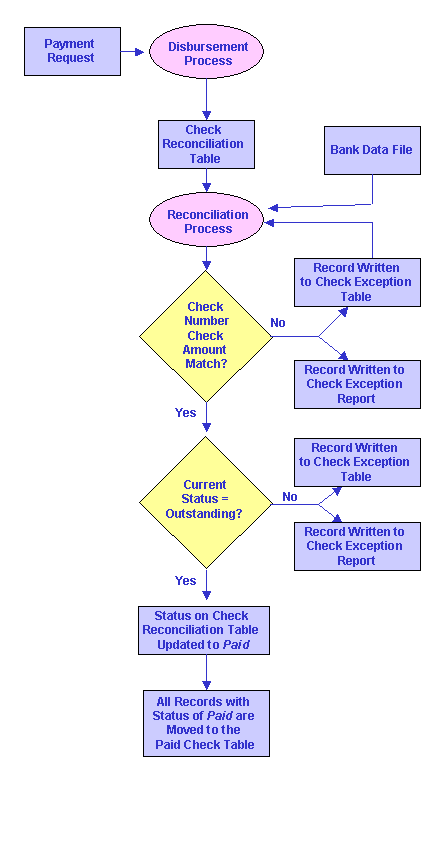
The Auto Check Reconciliation process compares client check records on Check Reconciliation (CHREC) table to records on Check Exception (CHKEXCP) table (which contains both current day's bank file records in addition to any records that have failed prior reconciliation processing.)
If an exact match is found between Check Reconciliation (CHREC) table and Check Exception (CHKEXCP) table, and the record on CHREC has a status of Disbursed/ Warranted, the status is then changed to Paid. The record is then moved from CHREC to the Paid Check (PDCHK) table. If an exact match is not found, or if a match is found but CHREC Check Status is anything other than Paid, the exception record remains on the CHKEXCP table updated with a reason for the reconciliation failure. The exceptional records remain on the CHKEXCP until they have been reconciled or they are marked for deletion by a user.
Banks do not send EFT data along with the check data in the bank file. However, visibility of EFT payments is available on the Check Reconciliation (CHREC) table until the EFT has cleared the bank. The automated Check Reconciliation process compares the Cleared Date of the EFT record on the Check Reconciliation (CHREC) table to the current day's date. If the date has elapsed, the EFT record is moved to the Paid Check (PDCHK) table.
The process flow of the Automated Check Reconciliation process is shown below.
